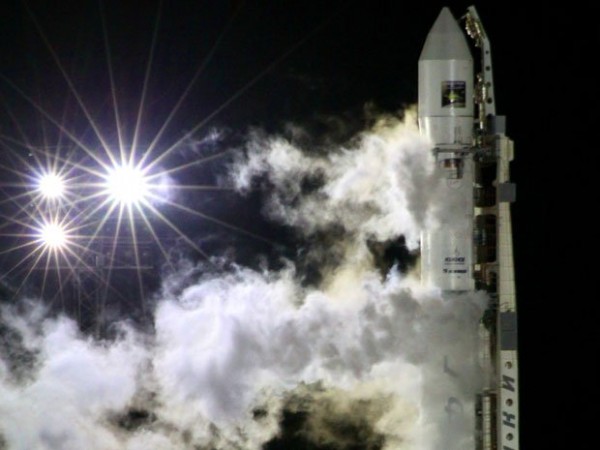Mars' Moon Phobos Slowly Being Pulled Apart by Tidal Forces, Study Finds
| Elena Garcia | | Nov 11, 2015 03:19 PM EST |
(Photo : Getty images) Mars' moon Phobos is slowly being pulled apart by tidal forces
Mars' moon Phobos is slowly being pulled apart by tidal forces and scientists expect it to be destroyed in 30 to 50 million years, a new study has found.
The larger of Mars' two moons Phobos is closer to the planet than any other in the solar system, orbiting at only 3,700 miles (6,000 kilometers) above the surface and being pulled closer by two metres every hundred years, reported Space Coast Daily.
Like Us on Facebook
Scientists say Phobos has already begun showing signs of its eventual demise, with imagery showing grooves in the moon's surface that indicate stress marks caused by the forces produced in the gravitational pull between Mars and the moon.
"We think that Phobos has already started to fail, and the first sign of this failure is the production of these grooves," said Terry Hurford of NASA's Goddard Space Flight Centre.
According to Science Daily, the grooves were originally thought to be fractures from an asteroid impact, as Phobos was more-or-less solid the entire way through, meaning that the tidal forces were not strong enough to pull the moon apart.
But new modelling indicated the grooves were actually "stretch marks" that occur when the moon is deformed by forces, and Phobos could actually be a rubble pile that is barely being held together and surrounded by a layer of powdery rock, dust and soil about 100 metres thick.
Researchers also noted that the grooves did not radiate from the impact crater but rather from a focal point nearby, further strengthening their theory, reported ABC News.
The same grim fate may also await Neptune's moon Triton, which has a similarly fractured surface and is collapsing inward.
Dr Hurford said the findings have implications for extrasolar planets, or planets outside our own solar system.
"We can't image those distant planets to see what's going on, but this work can help us understand those systems, because any kind of planet falling into its host star could get torn apart in the same way," he said.
TagsMars' moon Phobos, NASA's Goddard Space Flight Centre, NASA, Phobos, NASAs space center, Phobos Craft, Space flight Centre, Mars
©2015 Chinatopix All rights reserved. Do not reproduce without permission
EDITOR'S PICKS
-

Did the Trump administration just announce plans for a trade war with ‘hostile’ China and Russia?
-

US Senate passes Taiwan travel bill slammed by China
-

As Yan Sihong’s family grieves, here are other Chinese students who went missing abroad. Some have never been found
-

Beijing blasts Western critics who ‘smear China’ with the term sharp power
-

China Envoy Seeks to Defuse Tensions With U.S. as a Trade War Brews
-

Singapore's Deputy PM Provides Bitcoin Vote of Confidence Amid China's Blanket Bans
-

China warns investors over risks in overseas virtual currency trading
-

Chinese government most trustworthy: survey
-

Kashima Antlers On Course For Back-To-Back Titles
MOST POPULAR
LATEST NEWS
Zhou Yongkang: China's Former Security Chief Sentenced to Life in Prison

China's former Chief of the Ministry of Public Security, Zhou Yongkang, has been given a life sentence after he was found guilty of abusing his office, bribery and deliberately ... Full Article
TRENDING STORY

China Pork Prices Expected to Stabilize As The Supplies Recover

Elephone P9000 Smartphone is now on Sale on Amazon India

There's a Big Chance Cliffhangers Won't Still Be Resolved When Grey's Anatomy Season 13 Returns

Supreme Court Ruled on Samsung vs Apple Dispute for Patent Infringement

Microsoft Surface Pro 5 Rumors and Release Date: What is the Latest?













